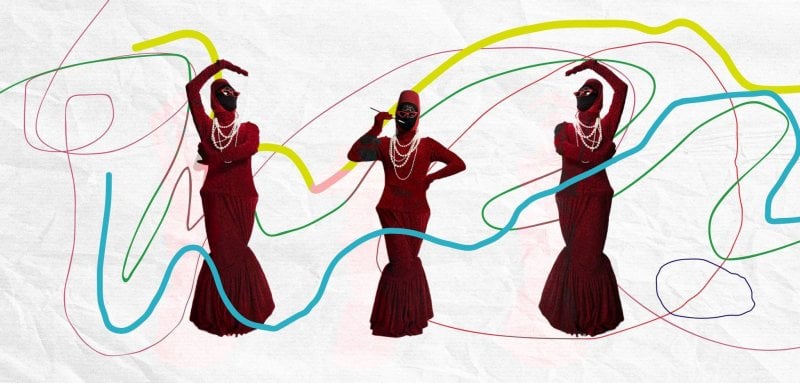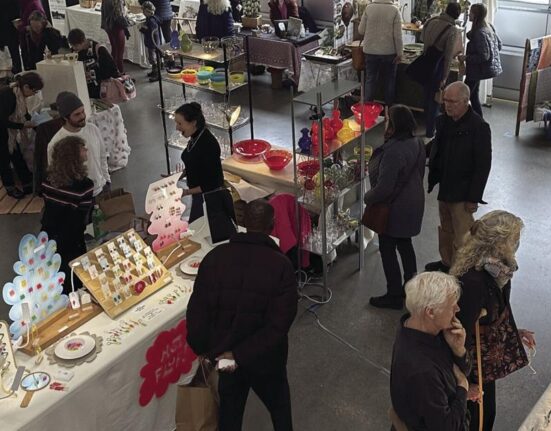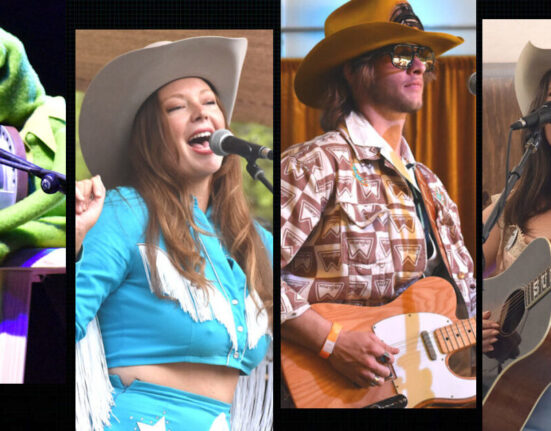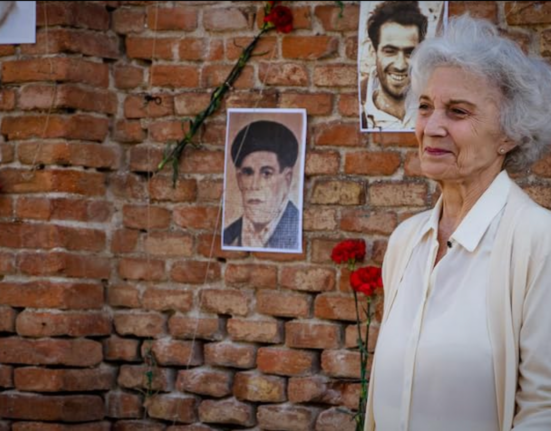The arts have always served as an outlet for creators to express themselves. Art by LGBTQ+ creators in the Arab world emerges as the group still struggles for their rights, searching for a new world that is more just, open, and accepting of the other.
Raseef22 met with four queer artists, who through their artistic practice, have found a language of their own and refuge from an otherwise harsh environment.
Art in the face of violence
From a lens fixed above a corridor, Hadi Moussally is captured dancing with fixed, defiant eyes – a solitary figure in an empty house, against the screams of a hate group.
Moussally explained to Raseef22, “Through art, we affirm our presence, express our thoughts, and make our voices heard. It is a peaceful way to challenge traditional ideas and confront anyone who seeks to erase us from the public space.”
He chose to respond to bigoted hatred by transforming violence into a part of his artistic practice, a sign of defiance and refusal to succumb to fear and submission, asserting his right to exist and express himself.
“Through art, we affirm our presence, express our thoughts, and make our voices heard. It is a peaceful way to challenge traditional ideas and confront anyone who seeks to erase us from the public space.”
A Tripoli native, Moussally concludes his dance by raising his middle finger to the violence that members of the LGBTQ+ community faces in Lebanon, especially in recent times. “Art is my way of declaring my existence and demanding my basic rights to life, safety, protection, and individual freedom. It is also my response to all those groups trying to seize what is left of life within us.”
Since 2012, Moussally has transitioned to the world of fashion and has directed several experimental films. In 2014, he released his first documentary about the end of his grandmother’s life, before establishing the production unit H7O7, which aims to empower the local film and photo industry. In 2018, he completed an experimental project on positive albinism. The photos were exhibited at UNESCO, Paris City Hall, and the Beirut Art Fair.
Moussally has directed several films addressing female and queer issues, including the award-winning Bellydance Vogue and Les Fleurs du Mâle.
Moussally shares, “My lens always strives to create sensory and aesthetically pleasing visual worlds, mixing the experimental, documentary, fashion, and imagination.”
Moussally is optimistic about the future, as he presents the drag show Salma Velour, in which he portrays a fictional and mysterious character who covers their face in their search of a free and more just world.
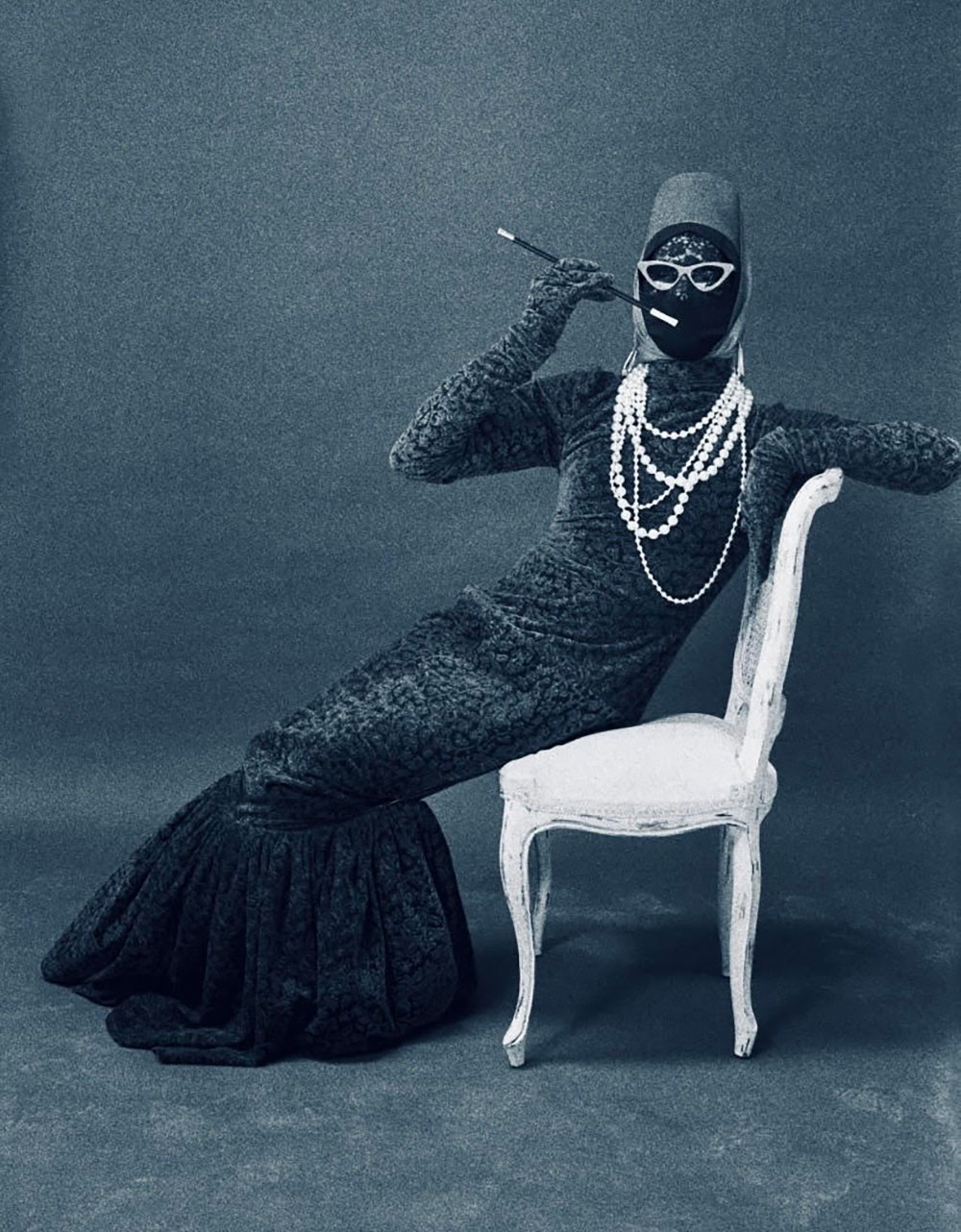 Drag queen Salma Velour, a fictional and mysterious character who covers their face
Drag queen Salma Velour, a fictional and mysterious character who covers their face
Salma’s images are often symbolic, blending various elements, genders, arts, and styles, in an attempt to distance themselves from stereotypes in the queer space. Through videos and live dance shows, Salma marries fashion and music, asserting ownership over her body.
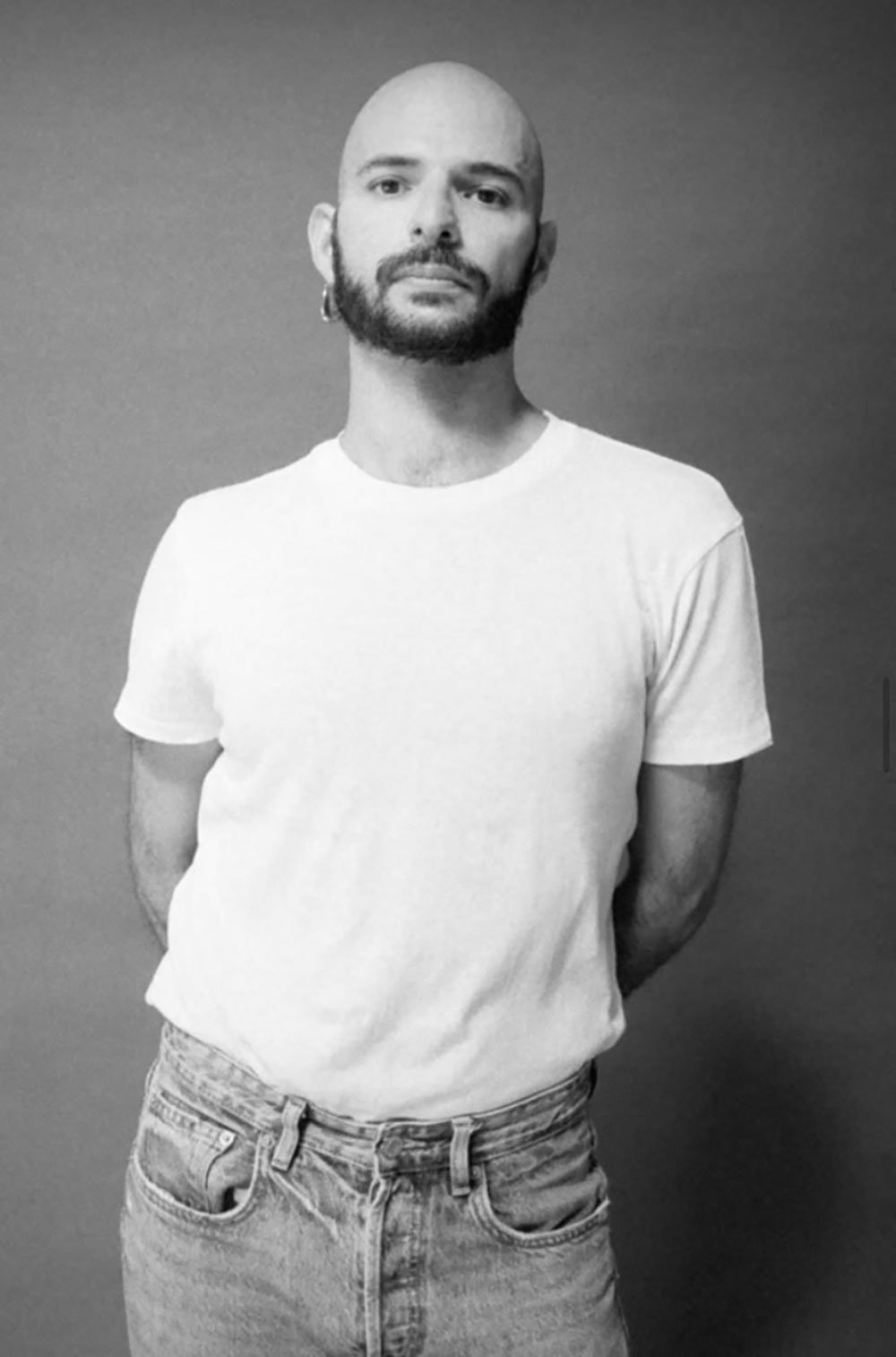 Artist Hadi Moussally
Artist Hadi Moussally
Moussally’s work tackles feminist and queer issues, where symbols and signs lead us to reflect on thought, politics, religion, and ethics, and where the private and public realms intertwine. He presents internal conflicts and struggles, while exposing audiences to the influence of our surroundings.
Although Moussally describes himself as a “man with one hat or many hats,” he tries to rebel and break stereotypical molds that not only haunt his gender identity, but also his thoughts and identity.
A gateway to escape the hell of war
In a region riddled with war and excessive violence, where freedom is suppressed by authorities, the possibility of creating queer art was very welcome for Sara Khayat, and has afforded her a break from stereotypical and conventional dichotomies, sowing hope and joy. Authorities have attempted to cloak Khayat’s practice in black, as they did to a rainbow painted by a young Damascene man.
 Artist Sara Khayat
Artist Sara Khayat
Khayat, with her locks of shiny red hair, opened up to Raseef22 about how art has enabled her to experience happiness in an otherwise harsh environment, “This art gave me the strength to participate in the Syrian revolution against oppression, becoming my refuge and support mechanism after I left Damascus.”
“My drawings and colors are an attempt to liberate women from stereotypical roles imposed by patriarchal systems and male-dominated societies, and to empower women and expand their choices in life and love”
Khayat has produced numerous designs and drawings dedicated to female Syrian detainees in support of the Syrian feminist movement, which has allowed her to participate in revolutionary activism despite not being on the ground in Syria.
Through her practice, she advocates for queer and feminist issues, striving for justice for women. She tells Raseef22, “My drawings and colors are an attempt to liberate women from stereotypical roles imposed by patriarchal systems and male-dominated societies, and to empower women and expand their choices in life and love.”
Today, Khayat is working on new artistic projects intended to help individuals, particularly within the LGBTQ+ community, better understand and accept themselves.
Her latest project focuses on members of the LGBTQ+ community in Sweden, the country where she currently resides. She describes the Scandinavian country as the place closest to her, providing safety, comfort, and acceptance, especially in comparison to the instability she experienced in Turkey.
Through her project, members of the queer community are encouraged to express childhood memories through drawing as a means of emotional release. “The child within us is suffering because of the ignorance imposed on us.”
An archive to preserve memory and reclaim space
“Art is a break from violence in all its forms, and it is also a treatment for the painful effects left by the outside world as scars on the soul and body,” shares Hamza AbuHamdia, an artist and activist from Amman, Jordan. He graduated as an architect and presented his urban photography project Amman Hamza at the Spring Sessions in Jordan (2016), in which he documented architecture across Amman and explored the city’s angles and lines through a queer lens.
 Artist Hamza AbuHamdia
Artist Hamza AbuHamdia
Through his photographic practice, AbuHamdia found a space which grants him the ability to confront questions of identity and belonging, reinforcing his rebellion against social structures and constraints, “Art, for me, is an island and a garden that assists in an internal dialogue with oneself, and brings individuals to inner peace.’
In 2020, Hamza recorded a podcast for Sowt and participated in conferences, lessons, and seminars in Jordan and France on architecture, cities, space, public policy, and sociology. He also participated in Artchives, an exhibition that took place in Paris in May 2023, in which he exhibited photographs he took of buildings in Amman. These images mark his attempts to imagine the city as an open and inclusive space, “In photographing Amman’s houses and buildings, I wanted to reclaim a place that society, family, and the state tried to deny me because of the differences in my gender identity.”
“We were born different, we love beauty, joy, and colors, and we strive to improve the harsh reality that surrounds us. We operate like a machine transforming pain and sadness into joy and love”
AbuHamdia highlights his Palestinian roots. He originally hails from Hebron (Al-Khalil), and emphasized that Israeli occupation, forced displacement, and exile cannot sever the connection of the displaced with their land, despite the distances. He says memory and the sense of ownership of the land cannot be eliminated, and attempts to silence and exclude the queer community in the Arab world from public spaces must be quashed.
For him, art is capable of strengthening bonds with a place, enabling the reconstruction of queer memory, and halting attempts to deprive the queer community of spaces to occupy.
The artist explains, “Through the arts, we can confront certain contradictions we experience, strengthen our personal identity, develop our self-confidence, and treat our pain… Art gives us strength and hope.”
He continued, “We were born different, we love beauty, joy, and color, and we fully strive to make life better, to improve the harsh reality around us, sort of like a machine that swallows pain and sadness, and spits it out as joy and love.”
AbuHamdia, who has Palestinian roots, asserts that Israeli occupation and forced exile cannot sever the connection of the displaced with their land, eliminate memory, or succeed in silencing and excluding the queer community in the Arab world from public spaces
A means of connection with others
“Oriental dance has greatly influenced my personal life; it has given me positive energy, optimism, and a willingness to embrace life, helping me release any negative energy or dark feelings within me,” Nasser, the Egyptian belly dancer, tells Raseef22.
Through a serene smile, he added, “It has been a long journey, but determination and faith has helped me get here.”
Nasser learned to dance in Egypt and later taught Latin dance (Samba, Tango, Cha-Cha). Recently, he has shifted towards belly dancing, explaining, “Art played a significant role in my professional and social life, enabling me to travel to almost all parts of the world, explore new cultures, meet people, and encounter new ideas. It allowed me to open more than one school for teaching belly dance in different countries.”
Nasser, who now works as a choreographer and instructor, refuses to define his nationality and gender identity, dismissing such classifications and stereotypes as ignorant. He points out that dance is also a sport, with huge physical benefits, a means to convey ideas, and an expression of internal feelings. “Through dance, you bring out all your emotions and thoughts, embodying them in dance movements. When I enter the stage and start dancing, I feel like I’m flying like a butterfly.”
His dance group, which he trains and choreographs, consists of around 30 dancers. He dreams of presenting shows on large stages and theaters in the Arab world, like in Jerash and Carthage. His biggest dream is to perform a show by the Great Pyramids.
“My mother is proud of me and my work,” he tells us.
“Dance has greatly influenced my personal life; it has given me positive energy, optimism, and a willingness to embrace life, helping me release any negative energy or dark feelings within me.”
In 2021, Nasser appeared in a music video alongside the Hooria Berlin, dancing in Pharaonic attire – bold and unusual for the Arab world, especially as it depicted a same-sex love story. “My experience working with Hooria Berlin was wonderful… a unique experience within the LGBTQ+ community. We wanted to show artistic production with simple capabilities.”
Despite drawing widespread criticism, the video gained widespread popularity, “Working with Modi was a unique experience. He is a young man who loves challenges, and the idea of producing a video clip for an Arab drag queen from the Syrian LGBTQ+ community with a young man from Iraq and another from Egypt is unusual and strange to the world of Arab art. The clip quickly became widespread and remained trending for a considerable period.”
Hadi, Sarah, Hamza, and Nasser continue to pursue their dreams, seeking more success creatively. They are driven by their will and belief in their right to succeed.
Raseef22 is a not for profit entity. Our focus is on quality journalism. Every contribution to the NasRaseef membership goes directly towards journalism production. We stand independent, not accepting corporate sponsorships, sponsored content or political funding.

